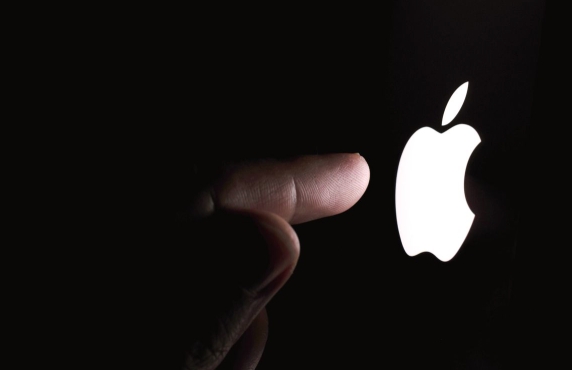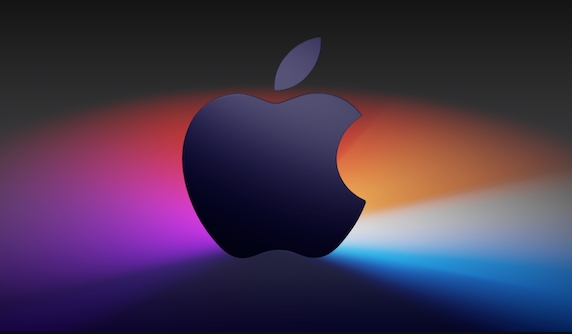如何從Mac OS完全刪除程序
要完全卸載macOS上的程序,必須手動刪除應用及其關聯文件;首先將應用從“應用程序”文件夾拖到廢紙簍,然後通過“前往文件夾”刪除~/Library/Application Support、~/Library/Preferences、~/Library/Caches、~/Library/Containers和~/Library/Logs中相關的支持文件,接著在系統設置中移除登錄項,在瀏覽器中刪除相關擴展,必要時使用AppCleaner等第三方工具自動掃描殘留文件,最後清空廢紙簍以徹底刪除所有文件,這樣才能確保程序被完整移除並避免佔用空間或引發衝突。

Uninstalling a program on macOS isn't always as simple as dragging the app to the Trash. Many apps leave behind support files, preferences, caches, and other data that can take up space or cause conflicts. To completely remove a program from macOS , follow these steps:

1. Remove the App from Applications
Start with the basics:
- Open Finder .
- Go to the Applications folder.
- Locate the app you want to remove.
- Drag it to the Trash , or right-click and select Move to Trash .
⚠️ This removes the main app, but not all associated files.

2. Delete Related Support Files and Preferences
Apps often store data in hidden folders in your user directory. Here's where to look:
Open Finder , then press Shift Command G to bring up “Go to Folder,” and enter each of the following paths one by one:

~/Library/Application Support/
~/Library/Application Support/
Look for a folder with the app's name or developer and delete it.
~/Library/Preferences/
~/Library/Preferences/
Search for .plist files related to the app (eg, com.company.appname.plist ).
~/Library/Caches/
~/Library/Caches/
Delete any cache folders associated with the app.
~/Library/Containers/ (for sandboxed apps)
~/Library/Containers/
Some apps (especially from the Mac App Store) store data here.
~/Library/Logs/
~/Library/Logs/
Remove any app-specific log folders if present.
? Tip: The
~means your user home folder. These Library folders are hidden by default in newer macOS versions, which is why you need to use “Go to Folder.”
3. Check for Login Items and Extensions
Some apps add themselves to start automatically or install system extensions.
Remove Login Items:
- Go to Apple Menu > System Settings (or System Preferences) .
- Click General > Login Items .
- Select any entries related to the app and click the – button to remove.
Remove Browser Extensions (if applicable):
- Open Safari, Chrome, or Firefox.
- Go to Extensions or Add-ons.
- Uninstall any extensions tied to the removed app.
Remove Menu Bar or System Extensions:
- Some apps install status menu extras (eg, in the top-right corner).
- Right-click and see if there's an option to remove, or check the app's settings before uninstalling.
4. Use a Third-Party Uninstaller (Optional but Helpful)
If you'd rather not manually hunt down every file, use a trusted uninstaller tool:
- AppCleaner (Free): Lightweight and effective. Just drag the app into it, and it finds related files for deletion.
- CleanMyMac X (Paid): Offers deeper system cleanup, including uninstaller, junk removal, and malware scan.
- AppZapper (Paid): Long-standing favorite for thorough app removal.
These tools automate the process and help ensure nothing is left behind.
5. Empty the Trash
After deleting the app and its files:
- Right-click the Trash icon and select Empty Trash .
- This permanently removes all files.
? If the app required admin rights, you might be prompted for your password during deletion.
Summary Checklist
To make sure you've fully removed a program:
- [ ] App moved from Applications to Trash
- [ ] Support files deleted from
~/Library/Application Support - [ ] Preferences (.plist) removed from
~/Library/Preferences - [ ] Caches cleared from
~/Library/Caches - [ ] Containers or extensions removed if applicable
- [ ] Login items disabled
- [ ] Trash emptied
It's not complicated, but skipping the Library files means you're not really “completely” removing the app. A little extra effort keeps your Mac clean and running smoothly.
以上是如何從Mac OS完全刪除程序的詳細內容。更多資訊請關注PHP中文網其他相關文章!

熱AI工具

Undress AI Tool
免費脫衣圖片

Undresser.AI Undress
人工智慧驅動的應用程序,用於創建逼真的裸體照片

AI Clothes Remover
用於從照片中去除衣服的線上人工智慧工具。

Clothoff.io
AI脫衣器

Video Face Swap
使用我們完全免費的人工智慧換臉工具,輕鬆在任何影片中換臉!

熱門文章

熱工具

記事本++7.3.1
好用且免費的程式碼編輯器

SublimeText3漢化版
中文版,非常好用

禪工作室 13.0.1
強大的PHP整合開發環境

Dreamweaver CS6
視覺化網頁開發工具

SublimeText3 Mac版
神級程式碼編輯軟體(SublimeText3)
 pycharm解釋器在哪裡 解釋器位置查找方法
May 23, 2025 pm 10:09 PM
pycharm解釋器在哪裡 解釋器位置查找方法
May 23, 2025 pm 10:09 PM
在PyCharm中設置解釋器的位置可以通過以下步驟實現:1.打開PyCharm,點擊“File”菜單,選擇“Settings”或“Preferences”。 2.找到並點擊“Project:[你的項目名]”,然後選擇“PythonInterpreter”。 3.點擊“AddInterpreter”,選擇“SystemInterpreter”,瀏覽到Python安裝目錄,選中Python可執行文件,點擊“OK”。設置解釋器時需注意路徑正確性、版本兼容性和虛擬環境的使用,以確保項目順利運行。
 如何停止Microsoft Edge自動更新
May 21, 2025 am 10:12 AM
如何停止Microsoft Edge自動更新
May 21, 2025 am 10:12 AM
如何停止MicrosoftEdge自動更新MicrosoftEdge是Windows11附帶的默認瀏覽器。早些時候,Edge瀏覽器隨著Windows操作系統更新而獲得更新。但是,基於Chromium的Edge瀏覽器已經改變了這一點。現在瀏覽器將在您不知情的情況下在後台自動更新。在本文中,我們將解釋如何在Windows11和macOS中停止自動MicrosoftEdge更新。有關的:如何在谷歌瀏覽器中禁用自動更新?檢查自動邊緣更新基於Chromium的Edge與基於Chromium後端代碼的Goo
 用java編程和其他語言的區別 Java的跨平台特性優勢分析
May 20, 2025 pm 08:21 PM
用java編程和其他語言的區別 Java的跨平台特性優勢分析
May 20, 2025 pm 08:21 PM
Java與其他編程語言的主要區別在於其“一次編寫,到處運行”的跨平台特性。 1.Java的語法接近C ,但去掉了容易出錯的指針操作,適合大型企業應用。 2.與Python相比,Java在性能和大規模數據處理上更具優勢。 Java的跨平台優勢源於Java虛擬機(JVM),它能在不同平台上運行相同的字節碼,簡化開發和部署,但需注意避免使用平台特定API以保持跨平台性。
 macOS系統啟動Apache服務的命令及配置
May 16, 2025 pm 10:00 PM
macOS系統啟動Apache服務的命令及配置
May 16, 2025 pm 10:00 PM
在macOS上啟動Apache服務的命令是sudoapachectlstart,配置文件位於/etc/apache2/,主要步驟包括:1.編輯httpd.conf文件,修改Listen端口如Listen8080;2.調整DocumentRoot路徑至個人目錄如/Users/your_username/Sites,並更新相應的權限設置;3.使用sudoapachectlgraceful命令重啟Apache以確保配置生效;4.啟用mod_deflate模塊壓縮數據,提升頁面加載速度。
 mysql安裝教程 手把手教你mysql安裝配置詳細步驟
May 23, 2025 am 06:09 AM
mysql安裝教程 手把手教你mysql安裝配置詳細步驟
May 23, 2025 am 06:09 AM
MySQL的安裝和配置可以通過以下步驟完成:1.從官方網站下載適合操作系統的安裝包。 2.運行安裝程序,選擇“開發者默認”選項並設置root用戶密碼。 3.安裝後配置環境變量,確保MySQL的bin目錄在PATH中。 4.創建用戶時遵循最小權限原則並設置強密碼。 5.優化性能時調整innodb_buffer_pool_size和max_connections參數。 6.定期備份數據庫並優化查詢語句以提高性能。
 如何在Windows 11中卸載程序?
Jun 30, 2025 am 12:41 AM
如何在Windows 11中卸載程序?
Jun 30, 2025 am 12:41 AM
在Windows11上卸載程序有三種主要方式:1.通過“設置”卸載,打開“開始菜單”進入“設置”>“應用”>“已安裝的應用”,選擇程序點擊“卸載”,適合大多數用戶;2.使用控制面板,搜索並進入“控制面板”>“程序和功能”,右鍵程序選擇“卸載”,適合習慣傳統界面的用戶;3.借助第三方工具如RevoUninstaller清理更徹底,但需注意下載來源和操作風險,新手可優先使用系統自帶方法。
 uc瀏覽器與qq瀏覽器哪個好用 uc和qq瀏覽器深度對比評測
May 22, 2025 pm 08:33 PM
uc瀏覽器與qq瀏覽器哪個好用 uc和qq瀏覽器深度對比評測
May 22, 2025 pm 08:33 PM
選擇UC瀏覽器還是QQ瀏覽器取決於你的需求:1.UC瀏覽器適合追求快速加載和豐富娛樂功能的用戶;2.QQ瀏覽器適合需要穩定性和與騰訊產品無縫連接的用戶。
 macOS怎麼更新系統自帶軟件
May 19, 2025 pm 06:48 PM
macOS怎麼更新系統自帶軟件
May 19, 2025 pm 06:48 PM
更新macOS自帶軟件很簡單且重要,因為它能修復bug、提升性能、帶來新功能和安全性提升。你可以通過“系統設置”或“系統偏好設置”中的“軟件更新”選項進行更新,按照提示操作即可。如果遇到問題,嘗試重啟Mac或檢查網絡連接,蘋果支持頁面也提供解決方案。建議保持系統最新,更新前備份數據,並確保有Wi-Fi和足夠存儲空間。更新詳情可在蘋果官網查看。








